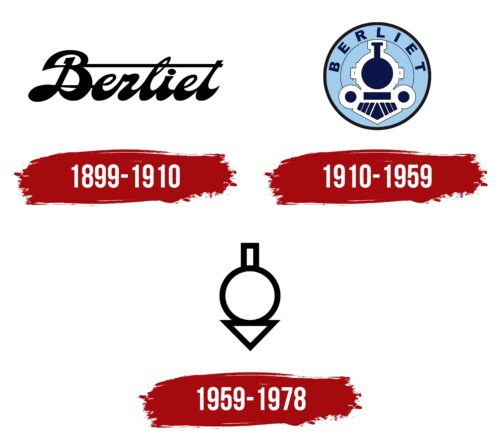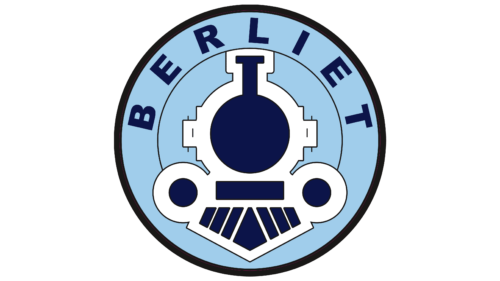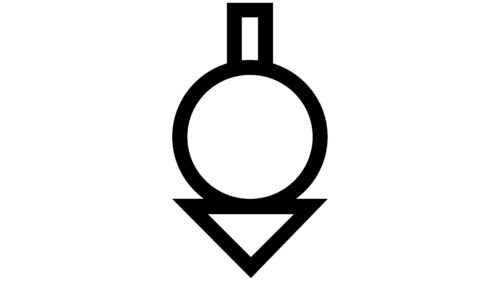The Berliet logo links the company’s trucks with the power of a train. It emphasizes the reliability and strength of the brand’s vehicles. The lines of the emblem resemble elements of blueprints, within which lies the success of future creations.
Berliet: Brand overview
In 1899, in Venissier, France, Marius Berliet laid the foundation for Société des Automobiles Marius Berliet, whose main focus was the production of automobiles.
However, by 1902, the company switched to truck production, thus occupying the niche of one of the first pioneers engaged exclusively in truck production. The first generation of trucks was equipped with steam and gasoline engines.
Berliet’s determination and innovation led the company to become the leading truck manufacturer in France by 1907. The company was at the forefront of introducing diesel engines into trucks.
When World War I broke out, Berliet played a critical role in supplying the French Army with military trucks, artillery, and ammunition. Military needs led to a major staff expansion to over 3,000 people.
The 1920s were a period of exponential growth for Berliet: the company expanded its market presence through exports to Europe, South America, and Asia. Notably, Berliet trucks were used extensively in France’s colonial territories.
However, in 1944, the company faced serious difficulties, falling under state administration due to accusations of collaboration with the German occupiers. After the war, Berliet returned to civilian production.
In the 1950s, Berliet diversified its activities to include bus production. Its flagship model, the Gazelle bus, gained immense popularity worldwide.
A major change in Berliet’s trajectory occurred in 1967 when the company was acquired by Citroën, which was bought out by Renault in 1974. As a result, by 1980, the Berliet brand was phased out and replaced by Renault Trucks.
During its heyday, Berliet was recognized as the second-largest truck manufacturer in Europe. Berliet trucks and buses are known for their durability, strength, and individual design. The company was a major employer with more than 10,000 employees.
Meaning and History
What is Berliet?
It is a French manufacturer of cars and trucks founded by Marius Berlier. The company initially produced vehicles, including cars and trucks, before specializing in heavy trucks, buses, and military vehicles. The company became known for its rugged and reliable vehicles. It eventually became part of Renault Trucks, continuing its legacy within the larger French automotive industry.
1899 – 1910
Berliet, operating from 1899 to 1910, left a significant mark in automotive history with its innovative and stylish passenger vehicle designs. The manufacturer’s first logo was crafted with elegance and grace, reflecting the refined style of the company’s vehicles. Gilding, monograms, and metallic decorations endowed Berliet cars with a premium and luxurious appearance while highlighting their high quality and uniqueness.
The brand was named after its founder, Marius Berliet, whose name became synonymous with innovation and quality in automobile manufacturing. The logo design incorporated the first and last letters of the brand’s name, connected by a black line symbolizing the top of a car. This design element decorated the logo and associated with the automotive design’s precision and functionality.
The Berliet logo was developed to represent the cars’ exterior and internal complexity visually. The inscription on the logo symbolizes the details and mechanisms hidden beneath each car’s exterior. The emblem created the effect of unveiling a mystery, showing viewers the harmonious and skilled workings of the mechanisms inside each vehicle. This gave the brand an image of innovation and technological advancement, emphasizing the craftsmanship and inventiveness of its creator.
1910 – 1959
The brand agreed with The American Locomotive Company, which licensed and produced Berliet automobiles. Consequently, a locomotive image appeared on the company’s emblem.
Another reason relates to Marius Berliet’s passion for developing trucks. He employed steam engines to power them, making these some of the most powerful machines after locomotives. The commercial transport market surged forward like a train thanks to the engineer’s developments.
The symbol of a circle represents harmony and perfection. The blue background symbolizes the realization of a dream. The white trim of the locomotive details indicated new inventions, while the blue core represented the technical components devised by Marius.
Despite the rapid conclusion of the partnership, the locomotive’s image remained forever with the brand, emphasizing the strength and power of its trucks.
1959 – 1978
The Berliet logo is a minimalist and abstract design representing the front of a locomotive. It appears as a sphere pierced by an arrow or a combination of a triangle, circle, and rectangle stacked vertically. The geometric figures are outlined in thick black lines, leaving the interior spaces colorless. This design gives the logo a stark and clean look. The emblem does not include dates or names, emphasizing its simplicity and abstract nature.
The geometric shapes prompt viewers to ponder their meaning, evoking questions like, “Is it a train? An arrow?” The bold black lines provide a strong visual impact, drawing attention to the defined shapes. The absence of color focuses on the form and structure of the figures, highlighting the brand’s intention to convey simplicity and mystery. This suggests that the brand values clarity and understated elegance.
The triangle, circle, and rectangle create a balanced and harmonious composition. The triangle at the top represents direction and movement, the circle symbolizes unity and completeness, and the rectangle conveys stability and foundation. These elements form a cohesive and visually engaging emblem.
The logo’s lack of additional elements like dates or names keeps it uncluttered and timeless. This ensures that the focus remains on the abstract design, allowing it to stand out in its simplicity. The thick black outlines give the logo a modern and bold appearance, while the absence of color adds sophistication and elegance.
The Berliet logo uses geometric shapes to create a distinctive and memorable image. The minimalist and abstract design invites interpretation, engaging viewers and sparking curiosity. This logo represents the brand’s commitment to simplicity, elegance, and clarity, making a strong statement through its clean lines and thoughtful composition.







